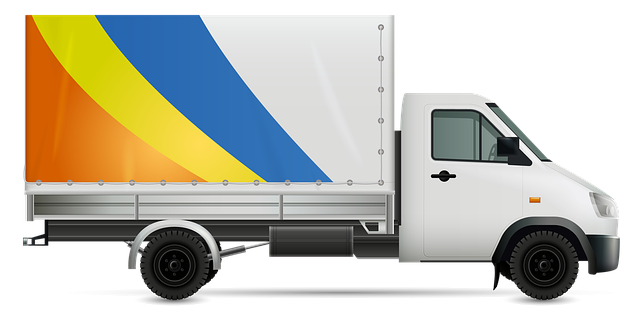Looking to register your car in California? This comprehensive guide walks you through the process step-by-step. First, understand the state’s registration requirements, including necessary documents like a valid title and proof of insurance. Next, gather these documents and visit your local DMV office. Complete the application form, pay the fees, and receive your unique California license plate. Don’t forget to utilize tools like a VIN verifier for added peace of mind during the registration process.
- Understand California Car Registration Requirements
- Gather Necessary Documents for Car Registration
- Visit Your Local California Department of Motor Vehicles (DMV) Office
- Complete and Submit the Car Registration Application Form
- Pay the California Car Registration Fees and Receive Your Plate
Understand California Car Registration Requirements

Before registering your car in California, it’s essential to understand the state’s specific requirements. All vehicles operated on California roads must be properly registered with the Department of Motor Vehicles (DMV). This involves providing crucial documentation and ensuring your vehicle meets safety standards. One key component is verifying the Vehicle Identification Number (VIN), which acts as a unique fingerprint for each car.
In California, this process can be completed through various methods, including a mobile VIN verifier or even during a mobile VIN inspection. Using these tools, you can quickly confirm your vehicle’s authenticity and history, a step that’s vital to ensure compliance and prevent fraud. Remember, accurate record-keeping is a cornerstone of the registration process in California.
Gather Necessary Documents for Car Registration

Before you start the registration process for your car in California, ensure you have all the essential documents ready. The key to a smooth registration is being prepared, so gather these crucial pieces of paper. First and foremost, you’ll need the Vehicle Identification Number (VIN) verifier, which can be obtained from your vehicle’s registration or title document. This unique code is like a fingerprint for your car and is essential for the verification process.
Additionally, you must provide proof of insurance, a valid driver’s license, and the current registration (if transferring ownership). For a hassle-free experience, consider using mobile vin verification or inspection services, which allow you to complete these steps conveniently. These options offer flexibility, especially if you’re short on time or have limited mobility.
Visit Your Local California Department of Motor Vehicles (DMV) Office

To begin the registration process, visit your local California Department of Motor Vehicles (DMV) office. This is where you’ll initiate the official procedures and ensure that all necessary documentation is in order. When you arrive, look for the dedicated window or station marked for vehicle registration. A DMV representative will guide you through the steps, which typically involve filling out registration forms and providing important details about your car.
One crucial step during this visit is getting your Vehicle Identification Number (VIN) verified. This process ensures the accuracy of your car’s identification data. You can opt for a traditional VIN inspection or consider using mobile vin verification services, offering convenience and potentially saving you time, especially if you’re already busy with other matters when visiting the DMV.
Complete and Submit the Car Registration Application Form

To begin the registration process for your car in California, start by obtaining a Vehicle Identification Number (VIN) verifier from the DMV or using a reliable mobile VIN verifier app. This critical step ensures that the vehicle’s details match the information on file with the manufacturer. The application form requires you to fill in detailed information about your car, including its make, model, year, and color, along with your personal data as the owner.
Make sure all the information is accurate and matches the documents provided during the mobile VIN inspection process. Double-checking these details will streamline the registration and ensure a smooth transaction at the DMV.
Pay the California Car Registration Fees and Receive Your Plate

After completing your California vehicle registration application, the next step is to pay the required fees and receive your license plate. The cost of registering a vehicle in California varies based on several factors, including the type of vehicle and its age. You can typically pay for your registration online, by mail, or in person at a DMV field office. Payment methods accepted include credit card, debit card, and check. Once your payment is processed, the DMV will issue your license plate, which is an essential component of identifying your vehicle on California roads.
Ensuring that your vehicle’s registration is up to date is crucial for legal compliance and safety. A valid license plate serves as a visual identifier, but it also holds significant value in case of emergencies or law enforcement interactions. Moreover, the California DMV offers convenient options for plate replacement or changing your address through their online services or by utilizing mobile vin inspection tools that provide efficient and accurate vehicle verification.
Registering a car in California is a straightforward process that requires understanding the state’s requirements and gathering the necessary documents. By visiting your local DMV office, completing the registration application form, and paying the associated fees, you’ll be on your way to securing your vehicle’s title and license plates. Don’t forget to utilize tools like a VIN verifier for a seamless and legally compliant car registration experience in California.
